
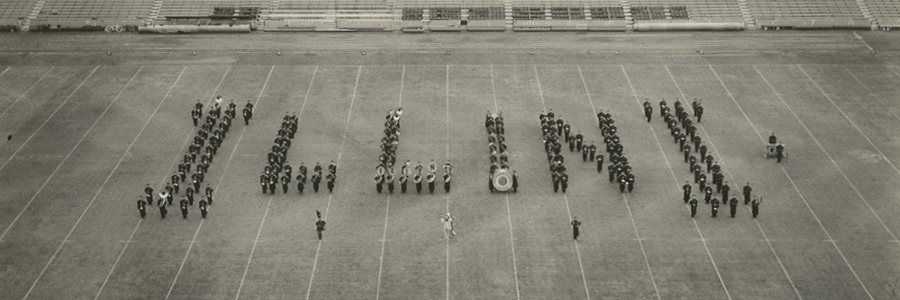
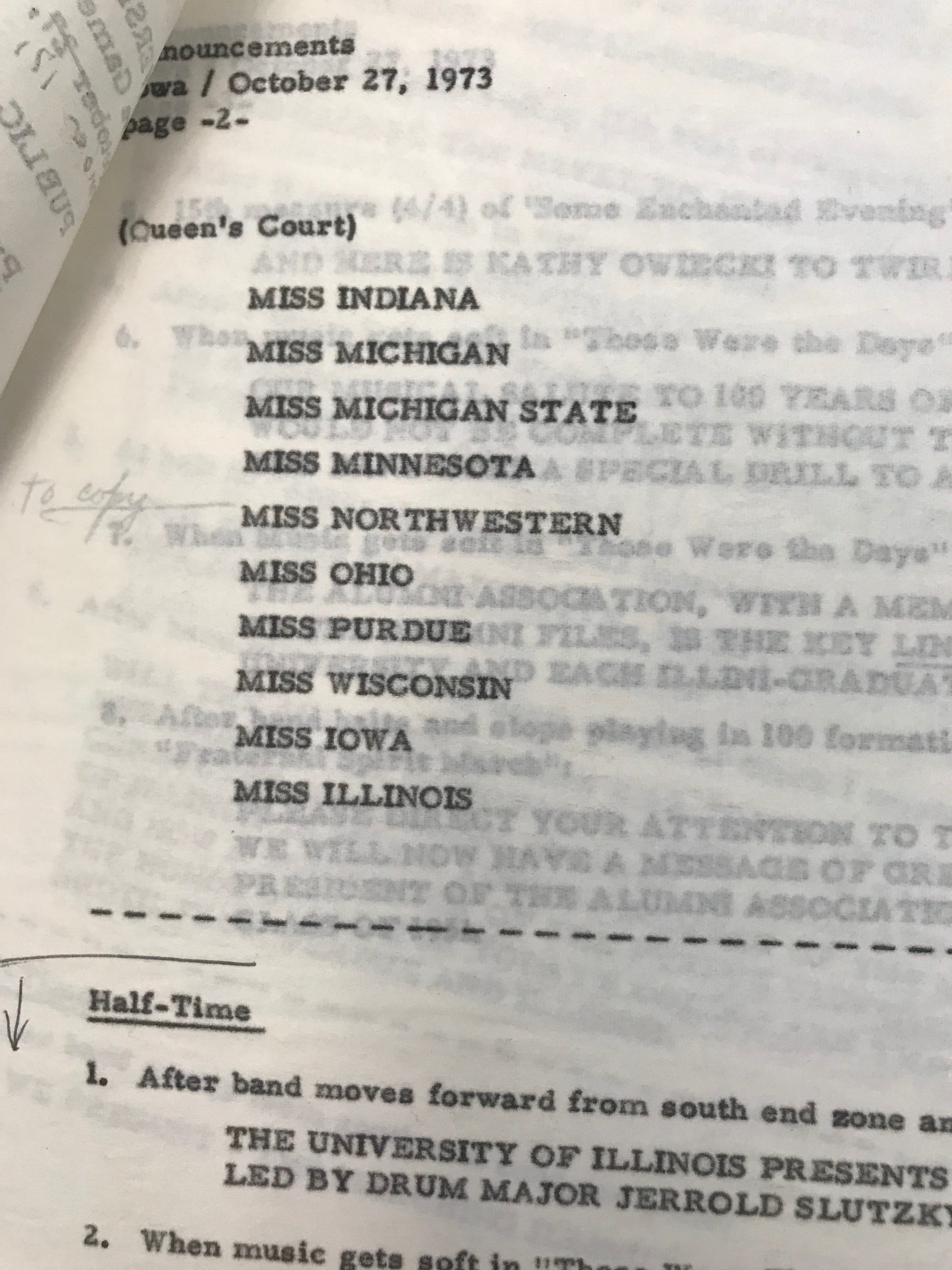
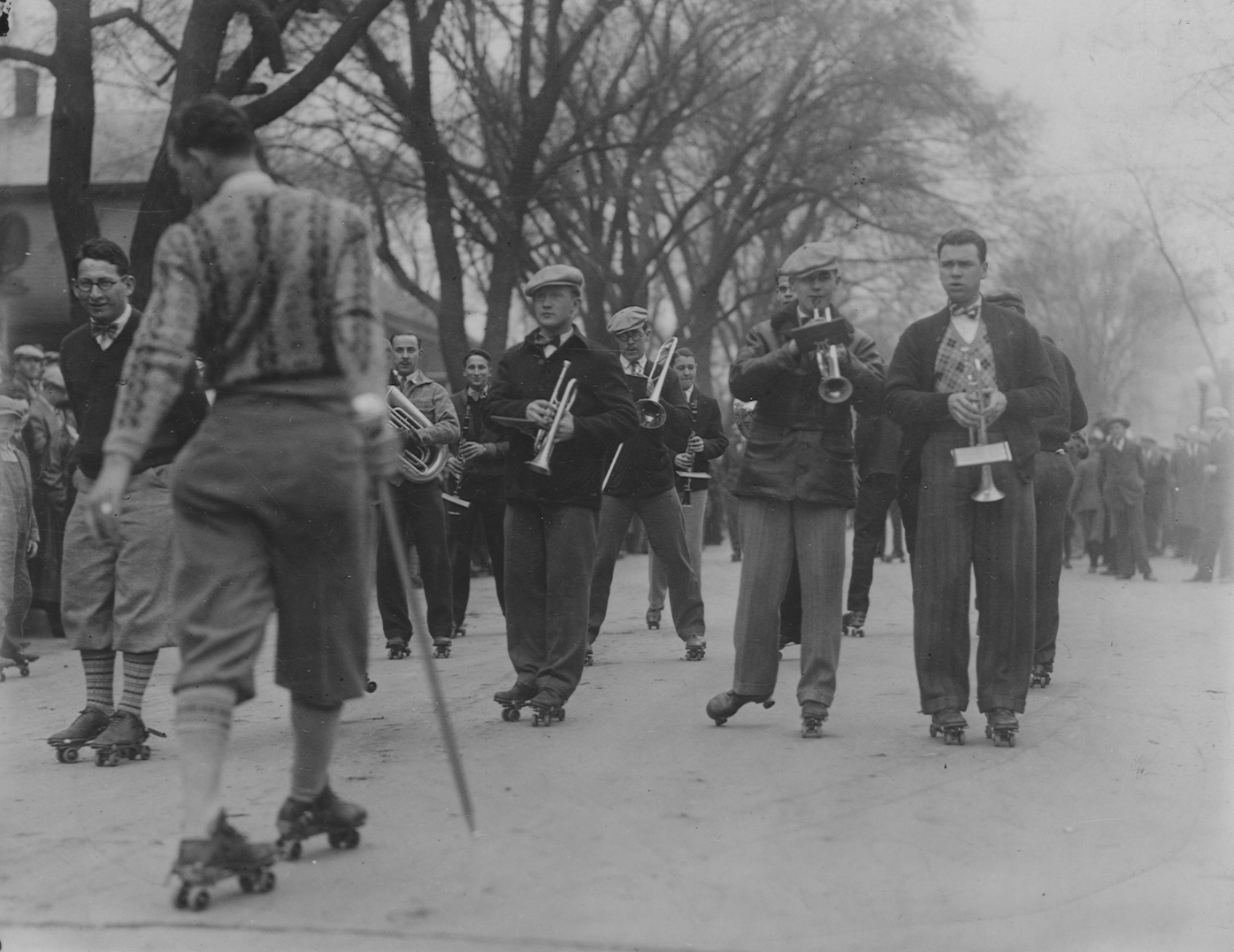
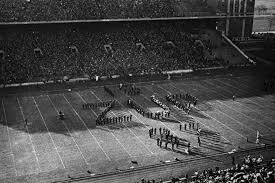
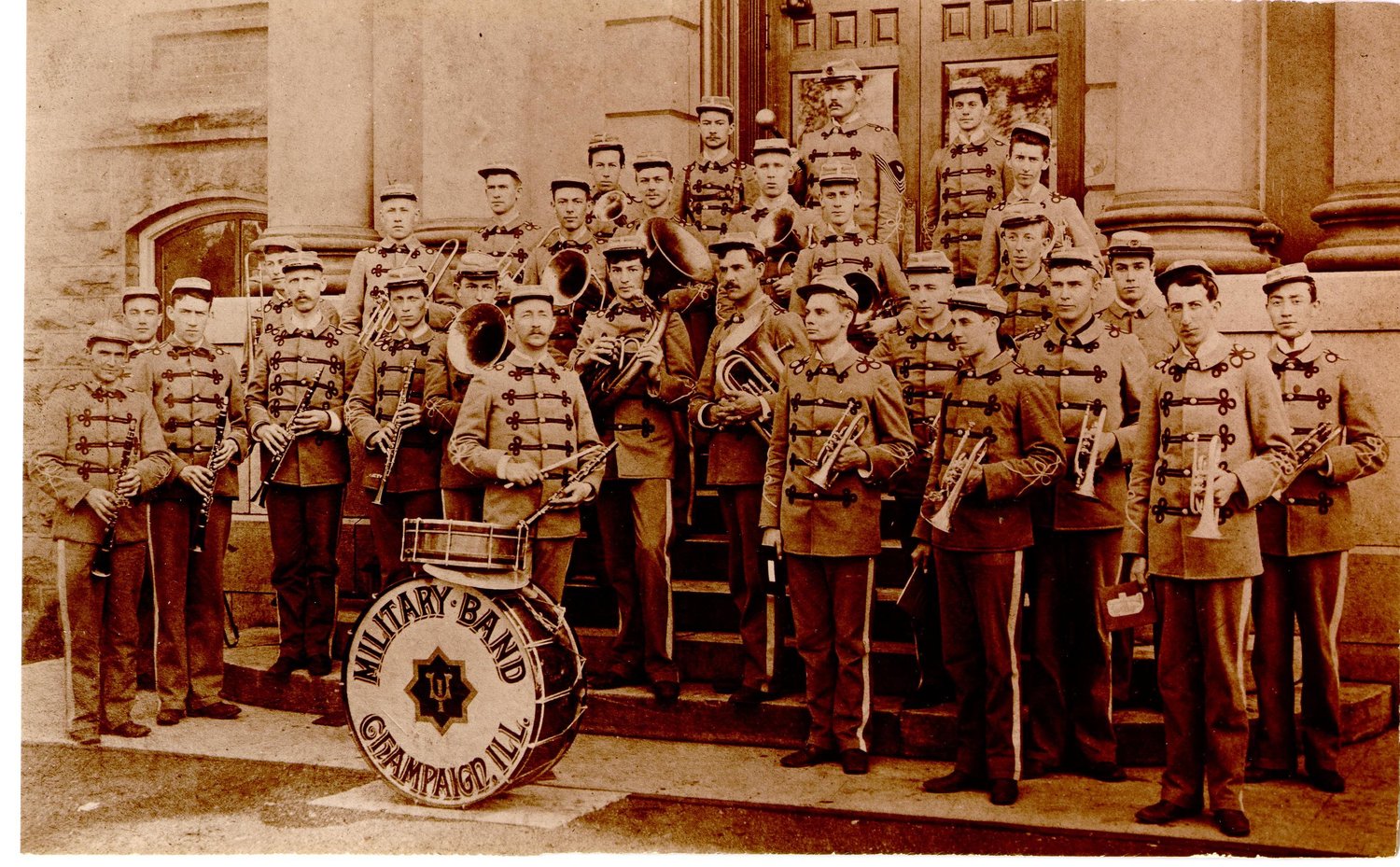




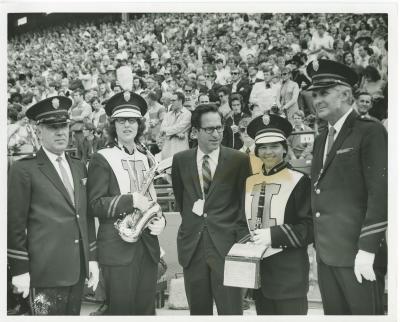

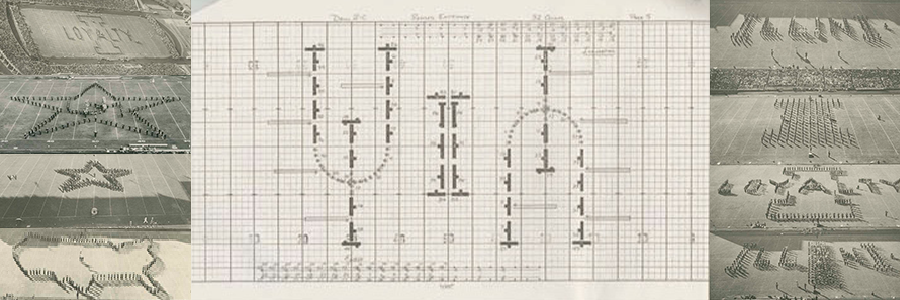
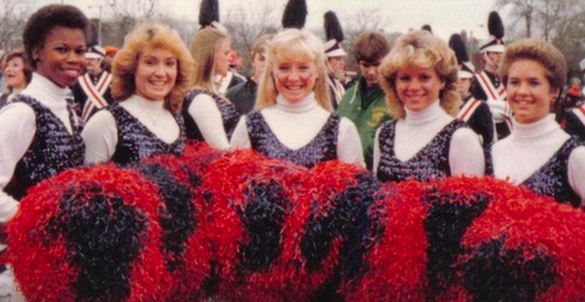
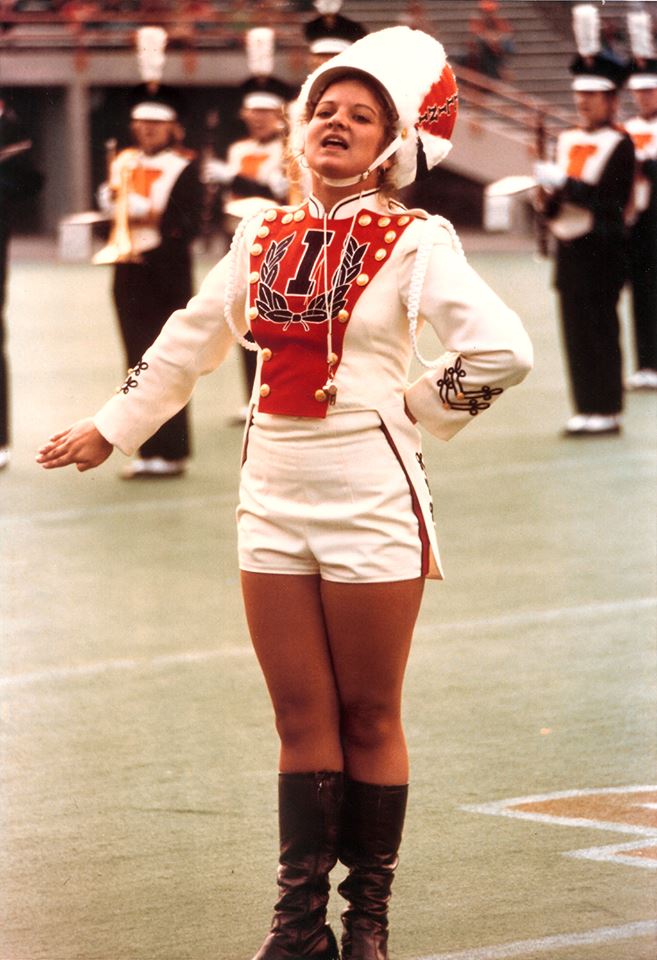
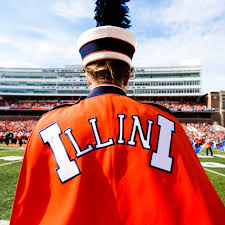
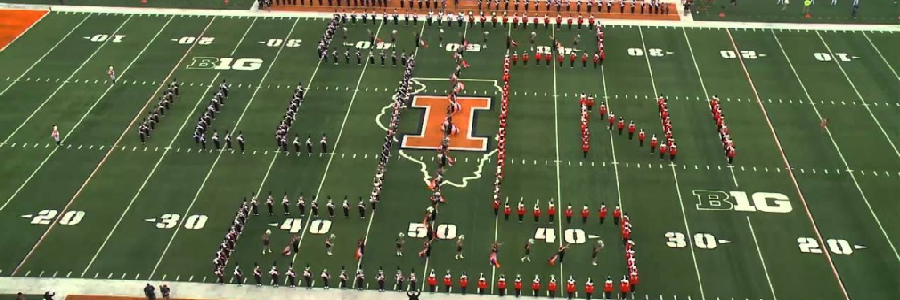
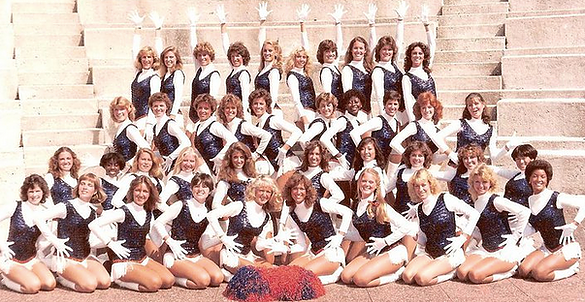



















This may be a topic that no one would have ever thought to study. Why? Probably because no one thought that there was a time when women wanted to be in the band but could not.
The movement of allowing women in the the marching band program all started with the implementation of the Title IX Act of the Higher Education Act of 1972. It stated, "No person in the United States shall, on the basis of sex, be excluded from participation in, be denied the benefits of, or be subjected to discrimination under any education program or activity receiving Federal Financial assitance...." With this, women could not legally be withheld from participating in any school functioned extra curricular; in our case, the Marching Illini.
In May 1971, Harry Begian, director of University Bands made a decision saying "There's nothing to keep girls form being in the Marching Illini." However, no women heard of this decision unti September 1971, a few hours before the first rehearsal of the school year. They were told in their classes about the decision, and that they should contact the directos, Everett Kinsinger. A women clarinetist claimed that during the summer she was sent a postcard saying that if she planned to be in football band to mark it "yes" and return it; but even though she did, she said "I showed up for rehearsal Thursday and the director told me, 'If we want you, we'll call you." (Daily Illini-9/16/71) No other women were there and she was sent home. Soon after, Kinsinger admitted to his mistake and let the clarinetist know that she was indeed invited to be in the band. This woman was not the only one to recieve the postcard, but many other women thought that it had only reffered to men when asking for memebers to join.
Following that, in September of 1971 at least a half dozen women musicians became official members of the Marching Illini. This began the formation of two special all-female units supplemental to the band, and eight memeber herald trumpet corps, which played introductory fanfares. The other being a 10 women Big Ten flag corps that carried in the colors of each of the schools in the Big Ten conference.
The move for the Marching Illini to include women into their band program striked a movement for other campuses in the Big Ten to do the same. The University of Minnesota soon after in October of 1971 created a women's rights group dedicated to challenging the all-male tradition of having only women in the band.Since then, women have been an integral part in the marching band world as well as in the Marching Illini. Through this movement, the Illinettes became more than just the "dance team" but an important adittion to the band; and eventually the women who held the colors, became apart of the color guard which also became an important entity within the band.
I think that women on our campus could have done more and possibly to help women get into the Marching Illini. There was not a lot of documented evidence of protests or reform that happened prior to the Title IX Act being put into place. This could be for lack of documentation, or because women thought that there already was a lot of push back from the directors that it was a lost cause to fight for.
Eventhough there might not have been any specific protests or movements dedicated to getting women into the band, but the Marching Illini were crucial to getting the ball rolling for other universities like the University of Minnesota and The Ohio State University, when adding women into their band program.
To Learn more about current life as a women in the marching illini please visit our 'Women Today' tab
To get the take of Director Kinsinger please visit our 'Kinsinger's Letters' tab